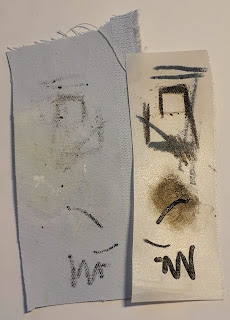Be not afraid of growing slowly, be afraid only of standing still.
Chinese proverb
Sewing seeds is something that should be quite zen, personally I am still working on this. Nothing seems to be in the right place and I'm never sure I am doing the right thing. This is my fourth year of allotment-ing, or maybe my fifth but I am a far cry from the competent philosophical gardner!
... still you have to start somewhere! ...planting is going full tilt...
I had thought seeds and seedlings might have some revelation for me in terms of creativity...maybe I just need to be patient, but what it did prompt me to do was revisit paper-making.
Making seed cards
I started off with egg boxes, tearing up the card into small pieces, I hoped a few days soaking would be enough to break down the card but I did have to put the pulp through a blender to break it down.

I experimented with ways of moulding the pulp to make seed papers. Baking trays and cookie cutters turned out to be useful moulds, I used a spent tea bag to fill the hole in the orange cutter but allow water to drain away.
After a day of initial drying I pressed in poppy seeds, the idea being you can give the seed cards away, the card can be planted and will disintegrate in the ground. At the end of this post are two extra links to more details on this idea.
Making paper sheets
It is quite a long time since I have done paper making so I am a little rusty, but once you start it is quite addictive. You need more water than you expect and the finer the pulp is, the neater the sheets will be. To form a series of sheets the same size use a 'deckle'. You can buy or make these, a frame with mesh stretched tightly over it. There are a few different versions f you start researching this, but this is my deckle.

Dipping and dragging the sheet former or 'deckle' through the water, you pick up an even layer of pulp, water drains through the mesh. I would need to do some more to work on better edges, so maybe I will add more pictures or do another post on this.
 |
| Getting the sheet to 'roll smoothly' off the former is tricky. |

You could add other ingredients to the pulp, I might try some cut grass, dandelion seeds and other paper fragments. The finishing of the sheets would also vary if you pressed them or burnished them as they dried out. The surface will be very rough compared to manufactured paper but it might be nice to collage on top of or sew into.
The mypodshots site is a creation of Californa based photographer Mark Connelly






















































